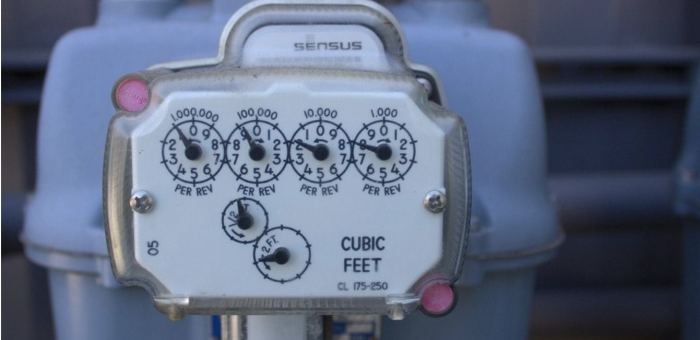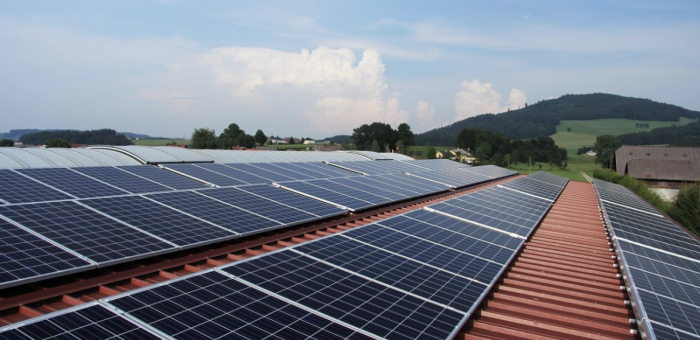A smart thermostat is a vital smart home product, managing your home’s temperature to help you optimize your energy consumption. Installing one can take all the thought out of managing your home’s heat and cut your energy costs.
You can improve these savings further by becoming a Power Wizard member to find the electricity plan that best suits your usage. Power Wizard offers an Enroll Me service that handles the work for you, tracking your plan and putting you on the best one available when it expires.
What Are Smart Thermostats?
A smart thermostat is a device that connects to your Wi-Fi and automatically adjusts your home’s heating and cooling temperature settings to optimize your home’s energy usage.
The best smart thermostats will learn your temperature preferences and set a schedule that automatically changes your temperature to save energy when you’re sleeping or out of the home. They also use geofencing to figure out when you’re on your way home, so they can adjust your home’s temperature to be suitable for you by the time you’re back.
What Are the Downsides of Traditional Thermostats?
Traditional thermostats have been a useful way to control the heat in your home for years. But, as the use of smart thermostats continues to spread, the shortcomings of traditional thermostats get increasingly noticeable. These include:
- If you have a manual thermostat, where you adjust the temperature by moving a lever to deflect a needle left or right, you have probably already figured out that they don’t accurately set the temperature. You’re mostly guessing how much more or less heat you want and hoping that you reached the right amount.
- May make home too chilly or warm. Since you have to adjust a traditional thermostat, the temperature stays constant. If you turn the heat down to sleep, it will be too chilly in the morning. And if you turn it up before going to bed because you’re feeling cold, you may wake up sweating.
- Energy usage. It’s easy to overuse energy with a traditional thermostat. If you forget to turn it down before you leave your home, you will end up wasting heat for hours.
5 Best Smart Thermostats to Increase Energy Efficiency
There are now many smart thermostats on the market, and not all are equally effective. Here are the best thermostats we’ve tried.
Ecobee SmartThermostat
The Ecobee SmartThermostat is a third-party Alexa device that many users recommend to control your home temperature and humidity. Its main draw is that it uses voice control technology, so you don’t need to use a phone app to control the temperature. Its compatibility with a variety of home protocols also enables it to work in virtually any smart home setup.
Since it includes a speaker with Amazon Alexa, you can also use it for typical Alexa functions, like making a phone call or adding items to your shopping list.
It comes with a remote sensor that lets you increase the range of your thermostat. If you have a room that you’d like more direct control in, this sensor will detect the temperature and occupancy in the room and let the thermostat know. Though the thermostat comes with only one sensor, it can pair with up to 32.
There are some limitations, though. The Ecobee SmartThermostat doesn’t currently have a geofencing feature for multiple phones. It will automatically turn on or off if your phone enters or leaves your home, but you will need to use third-party apps to set this up for other household members. It’s also large and not as attractive as other smart thermostats.
Google Nest Learning Thermostat
The Nest Learning Thermostat boasts that it can save people on average 10% to 12% on heating bills and 15% on cooling bills, and users generally agree. A household can have multiple “zones,” each with its own Nest thermostat and heat link, but the majority of homes just use one.
It uses movement sensors to make sure it’s not heating your home when it’s empty. You will know it has sensed movement, because the screen will light up as you walk past it. Over time, like the name suggests, it learns your schedule and adjusts the temperature in your home accordingly.
It comes with a guide and the tools you need to set it up on your own. That said, it does require you to turn off the breaker powering your old thermostat and clip wires into the correct slots, so you can get a professional to do it instead.
However, its major drawback is that it can’t adjust the heat in different zones. This means that it will often heat up empty rooms while trying to get your home to the right temperature. It does still save you money on your heating bill, though, so don’t let this turn you away if it seems like the right option.
Honeywell Home T9 Smart Thermostat
The Honeywell Home Smart Thermostat has almost every essential feature a smart home thermostat needs, like geofencing and smart scheduling, all for a reasonable price. You can pair it with up to 20 smart room sensors to detect humidity and make adjustments to thermostat settings in rooms with a lot of people.
This model is an easy thermostat to use, either directly on the device’s touchscreen display or through the Honeywell Home app. Like the Ecobee SmartThermostat, the Honeywell Home has access to voice commands, so you can even adjust the temperature without using your phone or touching the display.
It’s an easy device to install, even identifying the kind of HVAC system your home uses to help you through the installation process. Once it’s running, it will also send you monthly energy usage reports so you know how it’s doing. It will notify you if temperatures are set too high or low and when you need to change air filters.
It doesn’t support integration with Apple HomeKit, though. Its price point of $199 may also be too high for some households, though it’s less costly than the other two thermostats we have covered so far.
Amazon Smart Thermostat
At $60, the Amazon Smart Thermostat is one of the best budget options available for a smart thermostat. Using data from your Alexa smart home ecosystem, it makes AI-driven decisions called Hunches to figure out how to set your temperature. As a result, it will work better if you have more Echo smart speakers and displays in your home.
Hunches uses certain smart home devices, like lights, locks, and sensors, to figure out if you’re at home. It also uses the geolocation of your and your household members’ smartphones with the Alexa app installed and location settings turned on. However, it isn’t always accurate, and it’s not easy to troubleshoot which device has given it the faulty information. But, as long as you keep correcting it on the app when it makes mistakes, it will learn.
Besides this accuracy issue, the major challenge with the Amazon Smart Thermostat is that it requires you to have an Alexa smart home setup — it doesn’t have support for Google, HomeKit, or SmartThings. It also doesn’t have any native temperature sensors.
Sensibo Air
Sensibo Air is a smart air-conditioner controller that capitalizes on its motion detector technology and temperature and humidity sensors to give you the most comfortable environment right where you are.
It’s compatible with many brands of stand-alone air conditioners, though they must have IR sensors. The main unit also doesn’t feature any onboard controls or user interface, so you can only adjust it on the app. Since it’s just an air-conditioner controller, it will be harder to save enough money from the cooling cost savings to cover the cost of the device.
The Advantages of These Smart Home Products
These best smart thermostats give you a number of benefits that save energy and make your home feel more comfortable at all times. These include:
- AI technology that learns your habits
- Humidity and temperature sensors that help regulate your home environment
- Geofencing to identify when you’re on your way home
- Routine energy usage reports that help you figure out if you’re still wasting energy anywhere
How Should You Choose a Smart Programmable Thermostat
There are a number of factors that you should consider when choosing your smart thermostat, such as:
- Your budget
- Ease of installation, if you plan to set it up yourself
- Your present smart home environment, since not all devices offer the same smart home integration
- The size of your home, since you may need to buy sensors to extend the thermostat’s range
- Appearance could also play a role
Whatever smart thermostat you choose, though, it will save you energy. Your investment will pay off when your utility bills come in. To make sure that you get the most savings possible from your smart thermostat, become a Power Wizard member and find the electricity plan that best suits you, without any gimmicks or hidden fees.







